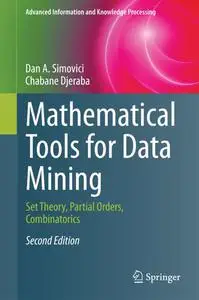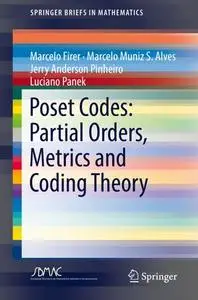Mathematical Tools for Data Mining: Set Theory, Partial Orders, Combinatorics, Second Edition by Dan A. Simovici
English | PDF(True) | 834 Pages | 2014 | ISBN : 1447164067 | 8.6 MB
Data mining essentially relies on several mathematical disciplines, many of which are presented in this second edition of this book. Topics include partially ordered sets, combinatorics, general topology, metric spaces, linear spaces, graph theory. To motivate the reader a significant number of applications of these mathematical tools are included ranging from association rules, clustering algorithms, classification, data constraints, logical data analysis, etc.



